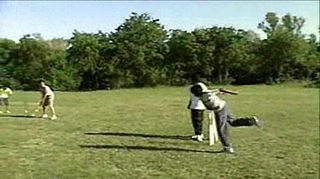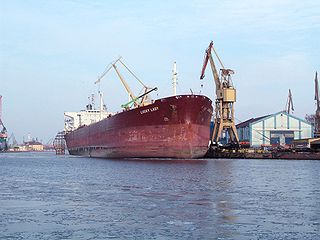Related Research Articles
Negligence is a failure to exercise appropriate and/or ethical ruled care expected to be exercised amongst specified circumstances. The area of tort law known as negligence involves harm caused by failing to act as a form of carelessness possibly with extenuating circumstances. The core concept of negligence is that people should exercise reasonable care in their actions, by taking account of the potential harm that they might foreseeably cause to other people or property.

Delict in Scots Law is the area of law concerned with those civil wrongs which are actionable before the Scottish courts. The Scots use of the term 'delict' is consistent with the jurisdiction's connection with Civilian jurisprudence; Scots private law has a 'mixed' character, blending together elements borrowed from Civil law and Common law, as well as indigenous Scottish developments. The term tort law, or 'law of torts', is used in Anglo-American jurisdictions to describe the area of law in those systems. Unlike in a system of torts, the Scots law of delict operates on broad principles of liability for wrongdoing: 'there is no such thing as an exhaustive list of named delicts in the law of Scotland. If the conduct complained of appears to be wrongful, the law of Scotland will afford a remedy even if there has not been any previous instance of a remedy being given in similar circumstances'. While some terms such as assault and defamation are used in systems of tort law, their technical meanings differ in Scottish delict.
In tort law, a duty of care is a legal obligation that is imposed on an individual, requiring adherence to a standard of reasonable care while performing any acts that could foreseeably harm others. It is the first element that must be established to proceed with an action in negligence. The claimant must be able to show a duty of care imposed by law that the defendant has breached. In turn, breaching a duty may subject an individual to liability. The duty of care may be imposed by operation of law between individuals who have no current direct relationship but eventually become related in some manner, as defined by common law.

English tort law concerns the compensation for harm to people's rights to health and safety, a clean environment, property, their economic interests, or their reputations. A "tort" is a wrong in civil, rather than criminal law, that usually requires a payment of money to make up for damage that is caused. Alongside contracts and unjust enrichment, tort law is usually seen as forming one of the three main pillars of the law of obligations.

Rylands v Fletcher (1868) LR 3 HL 330 is a leading a decision by the House of Lords which established a new area of English tort law. It established the rule that one's non-natural use of their land, which leads to another's land being damaged as a result of dangerous things emanating from the land, is strictly liable in the tort of nuisance.

Bolam v Friern Hospital Management Committee [1957] 1 WLR 582 is an English tort law case that lays down the typical rule for assessing the appropriate standard of reasonable care in negligence cases involving skilled professionals such as doctors. This rule is known as the Bolam test, and states that if a doctor reaches the standard of a responsible body of medical opinion, they are not negligent. Bolam was rejected in the 2015 Supreme Court decision of Montgomery v Lanarkshire Health Board in matters of informed consent.
Volenti non fit iniuria is a common law doctrine which states that if someone willingly places themselves in a position where harm might result, knowing that some degree of harm might result, they are not able to bring a claim against the other party in tort or delict. Volenti applies only to the risk which a reasonable person would consider them as having assumed by their actions; thus a boxer consents to being hit, and to the injuries that might be expected from being hit, but does not consent to his opponent striking him with an iron bar, or punching him outside the usual terms of boxing. Volenti is also known as a "voluntary assumption of risk".
Ex turpi causa non oritur actio is a legal doctrine which states that a plaintiff will be unable to pursue legal relief and damages if it arises in connection with their own tortious act. Particularly relevant in the law of contract, tort and trusts, ex turpi causa is also known as the illegality defence, since a defendant may plead that even though, for instance, he broke a contract, conducted himself negligently or broke an equitable duty, nevertheless a claimant by reason of his own illegality cannot sue. The UK Supreme Court provided a thorough reconsideration of the doctrine in 2016 in Patel v Mirza.
In English tort law, an individual may owe a duty of care to another, to ensure that they do not suffer any unreasonable harm or loss. If such a duty is found to be breached, a legal liability is imposed upon the tortfeasor to compensate the victim for any losses they incur. The idea of individuals owing strangers a duty of care – where beforehand such duties were only found from contractual arrangements – developed at common law, throughout the 20th century. The doctrine was significantly developed in the case of Donoghue v Stevenson, where a woman succeeded in establishing a manufacturer of ginger beer owed her a duty of care, where it had been negligently produced. Following this, the duty concept has expanded into a coherent judicial test, which must be satisfied in order to claim in negligence.
In English tort law, there can be no liability in negligence unless the claimant establishes both that they were owed a duty of care by the defendant, and that there has been a breach of that duty. The defendant is in breach of duty towards the claimant if their conduct fell short of the standard expected under the circumstances.
Causation in English law concerns the legal tests of remoteness, causation and foreseeability in the tort of negligence. It is also relevant for English criminal law and English contract law.
In English law, remoteness between a cause of action and the loss or damage sustained as a result is addressed through a set of rules in both tort and contract, which limit the amount of compensatory damages available for a wrong.

Miller v Jackson [1977] QB 966 is a famous Court of Appeal of England and Wales case in the torts of negligence and nuisance. The court considered whether the defendant - the chairman of a local cricket club, on behalf of its members - was liable in nuisance or negligence when cricket balls were hit over the boundary and onto the property of their neighbours, Mr and Mrs Miller, the plaintiffs.
In English law, a nervous shock is a psychiatric / mental illness or injury inflicted upon a person by intentional or negligent actions or omissions of another. Often it is a psychiatric disorder triggered by witnessing an accident, for example an injury caused to one's parents or spouse. Although the term "nervous shock" has been described as "inaccurate" and "misleading", it continues to be applied as a useful abbreviation for a complex concept. The possibility of recovering damages for nervous shock, particularly caused by negligence, is strongly limited in English law.

Overseas Tankship (UK) Ltd v Morts Dock and Engineering Co Ltd, commonly known as Wagon Mound , is a landmark tort law case, which imposed a remoteness rule for causation in negligence. The Privy Council held that a party can be held liable only for loss that was reasonably foreseeable. Contributory negligence on the part of the dock owners was also relevant in the decision, and was essential to the outcome, although not central to this case's legal significance.
The following outline is provided as an overview of and introduction to tort law in common law jurisdictions:

Burnie Port Authority v General Jones Pty Ltd is a tort law case from the High Court of Australia, which decided it would abolish the rule in Rylands v Fletcher, and the ignis suus principle, incorporating them generally into the tort of negligence.
Nuisance in English law is an area of tort law broadly divided into two torts; private nuisance, where the actions of the defendant are "causing a substantial and unreasonable interference with a [claimant]'s land or his/her use or enjoyment of that land", and public nuisance, where the defendant's actions "materially affects the reasonable comfort and convenience of life of a class of Her Majesty's subjects"; public nuisance is also a crime. Both torts have been present from the time of Henry III, being affected by a variety of philosophical shifts through the years which saw them become first looser and then far more stringent and less protecting of an individual's rights. Each tort requires the claimant to prove that the defendant's actions caused interference, which was unreasonable, and in some situations the intention of the defendant may also be taken into account. A significant difference is that private nuisance does not allow a claimant to claim for any personal injury suffered, while public nuisance does.

The floodgates principle, or the floodgates argument, is a legal principle which is sometimes applied by judges to restrict or limit the right to make claims for damages because of a concern that permitting a claimant to recover in such situations might open the metaphorical "floodgates" to large numbers of claims and lawsuits. The principle is most frequently cited in common law jurisdictions, and in English tort law in particular.
The civil liability of a recreational diver may include a duty of care to another diver during a dive. Breach of this duty that is a proximate cause of injury or loss to the other diver may lead to civil litigation for damages in compensation for the injury or loss suffered.
References
- ↑ [1949] 1 All ER 237
- ↑ [1950] 1 KB 201, [1949] 2 All ER 851, 65 TLR 683, 48 LGR 107, 93 Sol Jo 710
- ↑ [1951] AC 850, [1951] 1 All ER 1078, [1951] 1 TLR 977, 50 LGR 32, 95 SJ 333
- ↑ (1922) 38 TLR 615
- ↑ Loubser, M and Midgley, R (eds) The Law of Delict in South Africa 3rd ed (2017)
- ↑ Neethling et al Law of Delict 7th ed (2016)